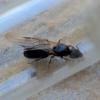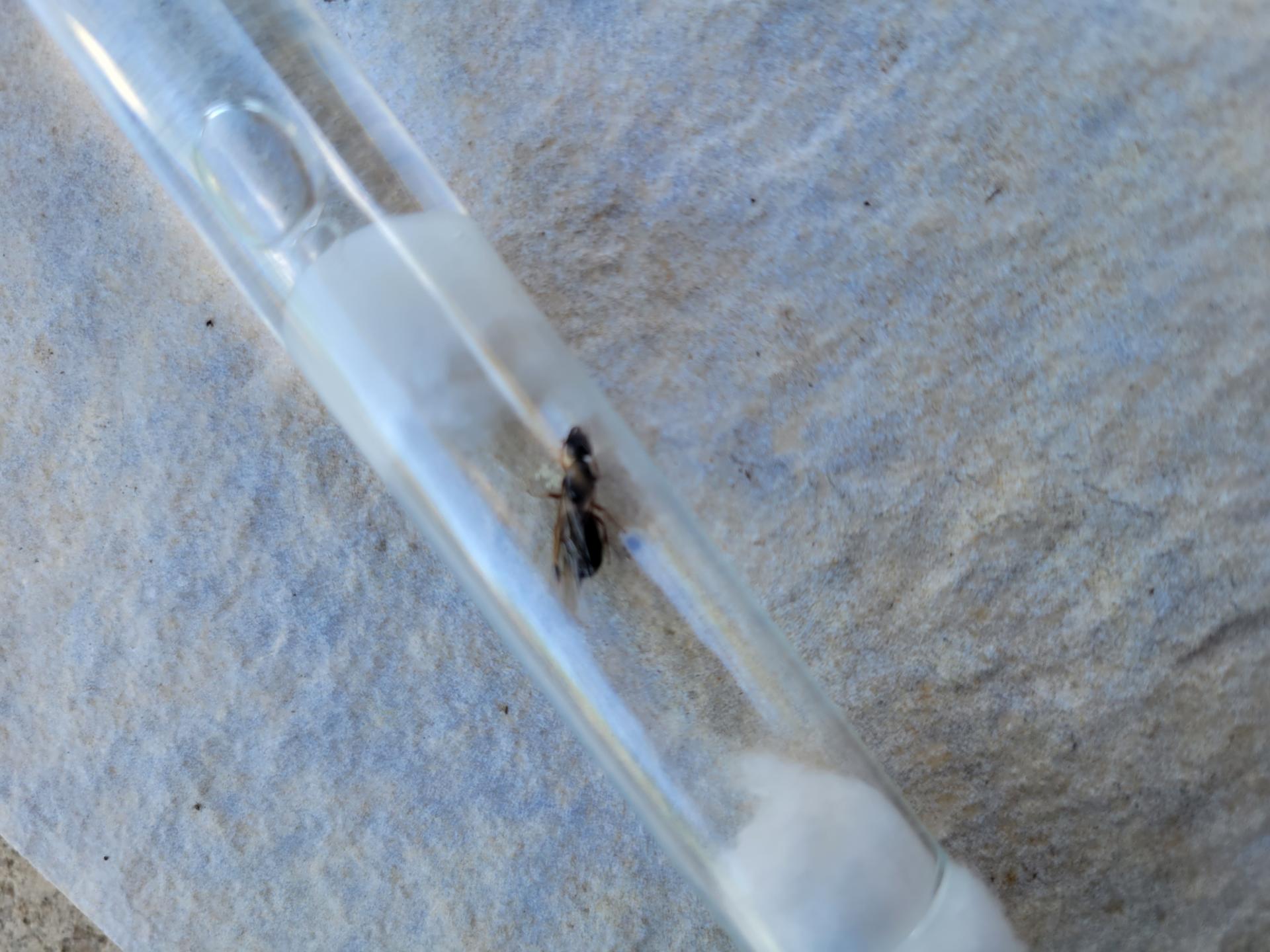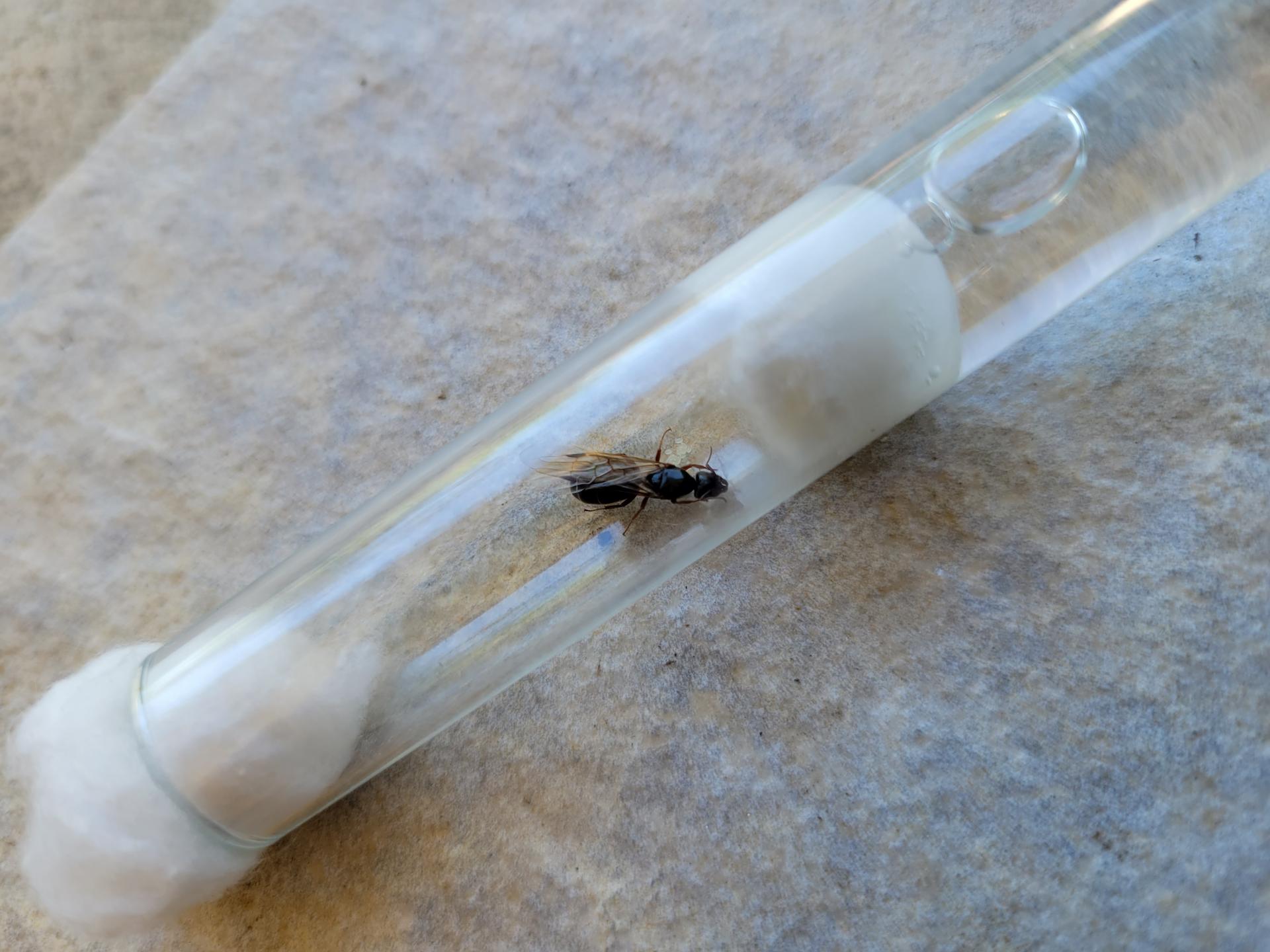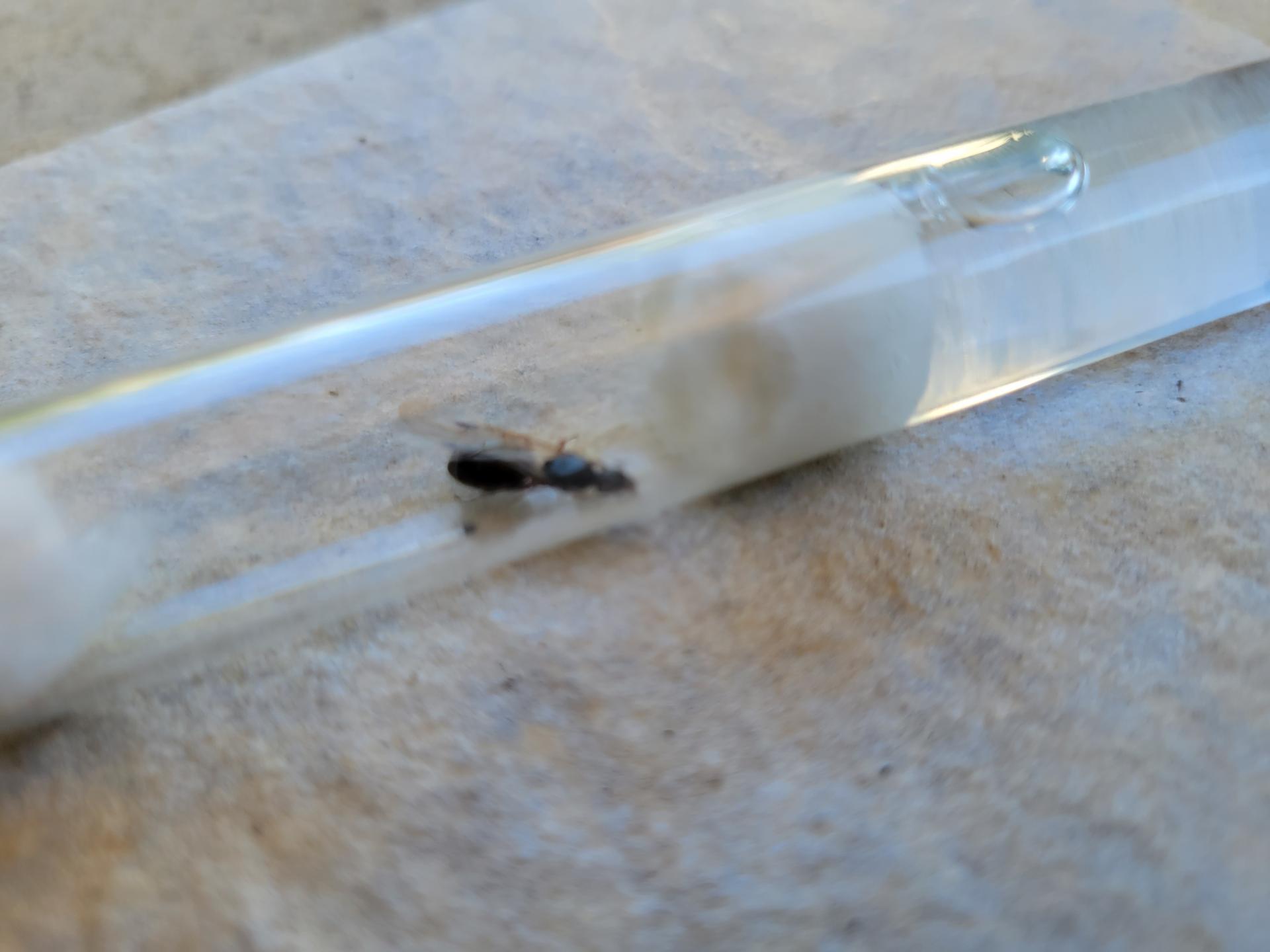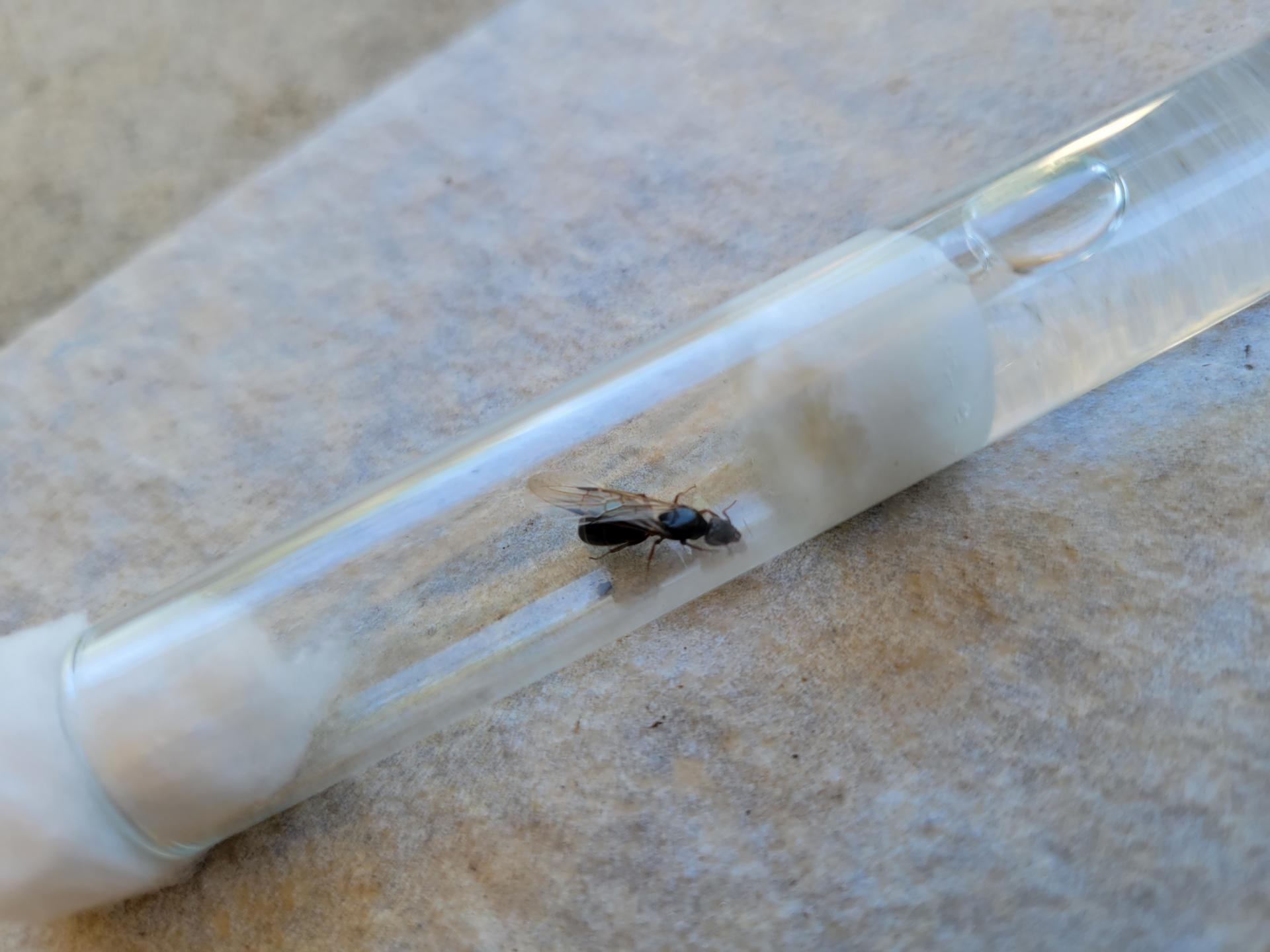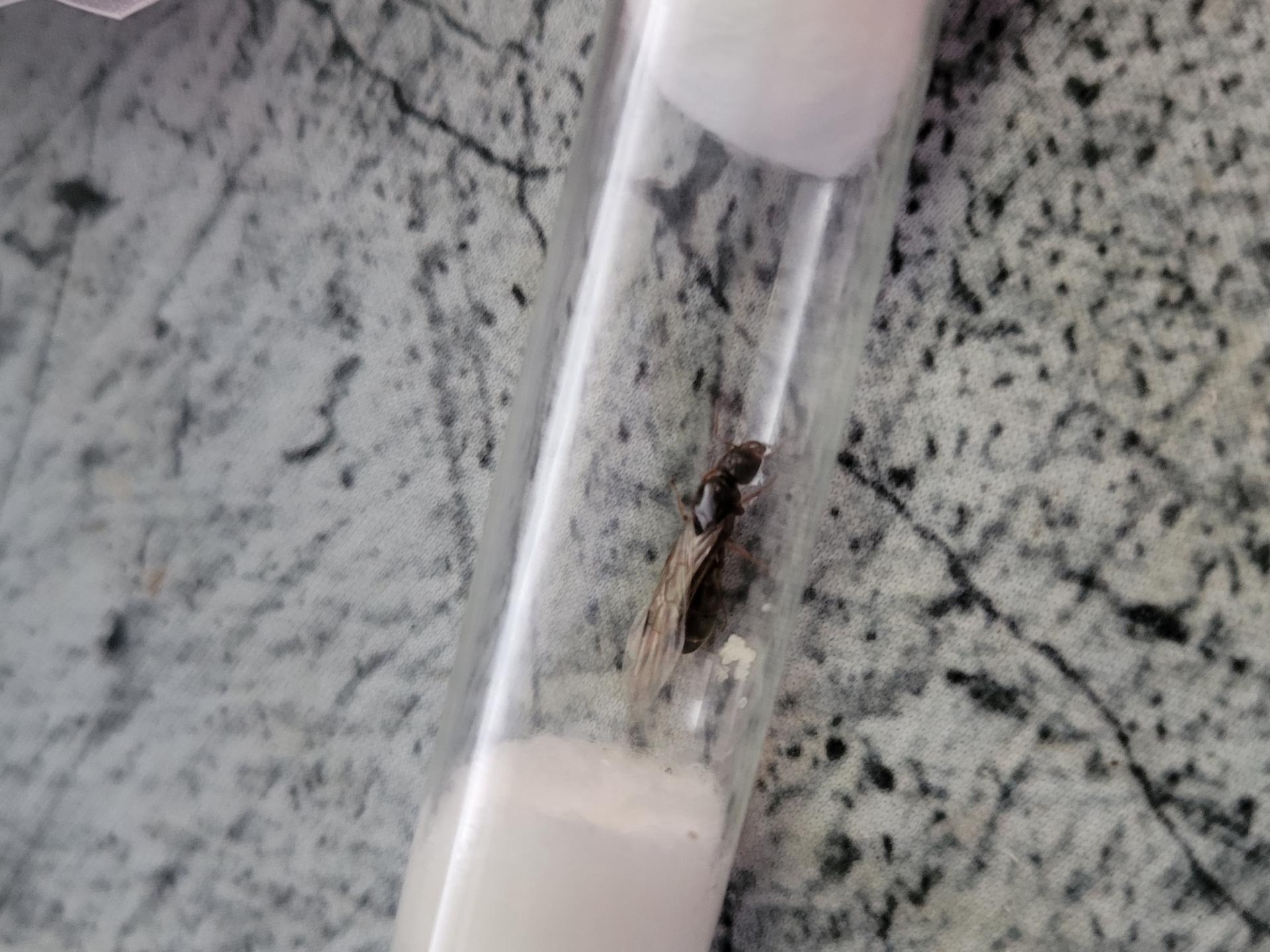-Caught this queen about a week ago around 4/4/22
-Found in a park with several, and lots of trees
-Size is about like 1/2 an inch to 3/4
-All black body, Red legs, yellow lines on thorax
When I originally caught it, I found it along which other queens which at the time I thought were all the same species, but later realized it looked different then the other queens
Edited by Antlover24, April 11 2022 - 12:45 PM.


